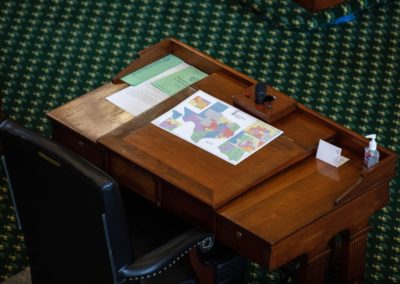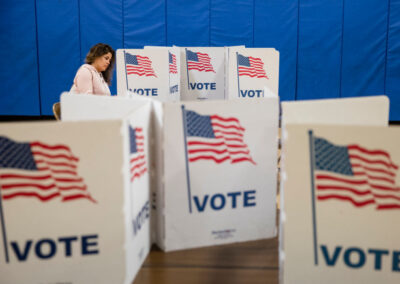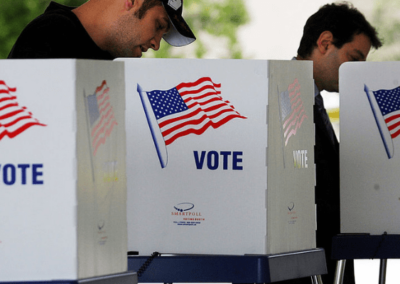Parents Are Moving Their Kids to Microschooling
Public school enrollments continue to decline as school choice grows more popular and available.
By: Kelli Ballard | October 6, 2025 | 755 Words

(GettyImages)
When it comes to education, parents have spoken up: They want a say in what is being taught to their children. The public school system has disappointed and frustrated moms and dads who don’t want their first grader being taught about adult relationships or forced to keep up with who is a boy or girl this week and preferred gender pronouns. Many schools have gone too woke for the average family, so it’s no wonder microschooling is growing in popularity.
Homeschooling and microschooling are not the same. With the first, it’s usually the parents in charge of teaching their kids. For microschooling, think of Little House on the Prairie and the one-room schoolhouse. Up to 20 kids of various ages learn and play together, taught by teachers but overseen by parents.
More Parents Move to Microschooling
Don and Ashley Soifer are co-founders of the National Microschooling Center, a nonprofit resource hub for this type of education. “Microschooling is one of the most exciting movements in education that we’ve seen in America,” Ashley told Stand Together. “We have three kids of our own, and they’re in three different microschools because truly, every child needs something different.”
For kids living in rural areas where there isn’t much in the way of school choice, microschooling is an appealing option for parents and children. Instead of long bus rides and crowded classrooms, students can learn together in a room with more one-on-one teaching. “In a rural area, the population is such that you can’t say, ‘Hey, we’re going to open up a 400 student elementary school,’ but you could open a 40 student school,” explained Scott Bess, founder of the Indiana Charter Innovation Center and board member of the National Association of Charter School Authorizers.
 “The beautiful thing about microschools is you can truly build them around the relationships and needs of the particular learners and families you’re serving,” Don Soifer told Stand Together. “Large systems can’t be flexible in the ways microschools can.”
“The beautiful thing about microschools is you can truly build them around the relationships and needs of the particular learners and families you’re serving,” Don Soifer told Stand Together. “Large systems can’t be flexible in the ways microschools can.”
School choice has been growing in popularity. A January survey by the National School Choice Awareness Foundation discovered that more than 60% of US parents of school-aged children considered sending their child to a different school in 2024. It can still be difficult, however, to find a private school or homeschool in some states. New Jersey, for instance, has strict guidelines, and parents must follow the public school curriculum.
However, in 2023, 13 states approved Education Savings Accounts (ESAs), which allocate public funds to families, giving them the ability to choose where their child learns. Similar legislation is appearing in other states as the move toward microschooling continues to expand.
One of the biggest contributors to the rapid growth of microschooling was the COVID pandemic, which led to remote learning. Studies show that children fell behind in reaching educational benchmarks and developed depression and anxiety among other issues. Some teachers remarked that kids forgot how to be students when they returned to the classroom.
Corey DeAngelis of the American Culture Project told Fox News Digital: “When the government schools closed their doors and left families hanging, families tried to figure out homeschooling, and one way that they were able to economize on the process of homeschooling, was that they had to get five to ten children together in a household.”
When it comes to education, parents want a say. They don’t want to be called “threats” because they question or protest what is being taught to their children. In 2022, President Joe Biden’s administration gave in to the National School Boards Association’s request to treat parents as “domestic terrorists” and invoke the Patriot Act against them for arguing against teachings that violate their beliefs or push critical race theory. Parents may want their child to have more one-on-one instruction instead of being crammed in a classroom with 30 or 40 other students. But many progressives are doing everything within their shrinking power to keep the status quo, indoctrinating young minds. The growing microschooling trend can release that grip.

- Microschooling – where small groups of students from different families learn together – is on the rise as public school enrollment continues to drop.
- Microschooling is a good way for smaller groups of families to have more control over what the students are being taught and how. It’s also more convenient and practical in many rural areas than larger public schools.
- The COVID pandemic accelerated the growth of homeschooling and microschooling and revealed to many parents just how public schools had been indoctrinating their kids.
















